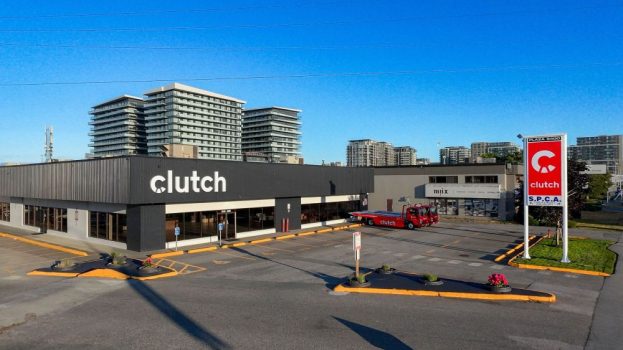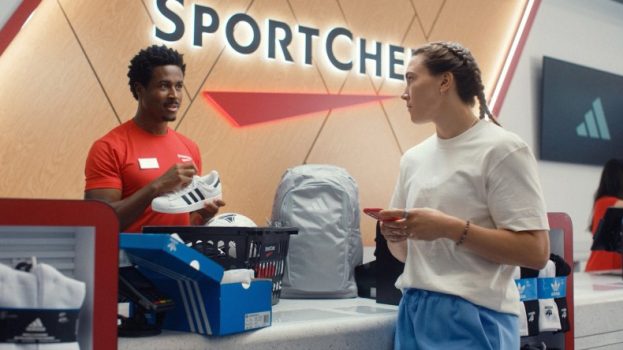 Doug Stephens is a retail futurist and founder of the consultancy Retail Prophet. Ahead of his talk at the 2023 Shopper Marketing Forum in Toronto on May 8, strategy caught up with Stephens to discuss the current and future retail landscape, from the changing function of physical stores to the role of technology in shopping to how much more share ecommerce stands to gain.
Doug Stephens is a retail futurist and founder of the consultancy Retail Prophet. Ahead of his talk at the 2023 Shopper Marketing Forum in Toronto on May 8, strategy caught up with Stephens to discuss the current and future retail landscape, from the changing function of physical stores to the role of technology in shopping to how much more share ecommerce stands to gain.
A number of retailers have overhauled the retail experience in an effort to become destination hubs (Staples, IKEA’s small format stores to name a few). Is this a roadmap to success for brick and mortar brands?
The harsh but abundantly obvious reality is that we live in a world of absolute product proliferation. The consumer’s primary challenge is no longer finding the product or service they need. The challenge today is sorting through the seemingly endless myriad of options available to them.
Therefore, it’s never been more crucial for brands to become the answer to a more important question than “who sells this product?” Because the answer to that question today is “anywhere”!
For Staples it was clear that simply offering office products was a path to oblivion. They had to become the answer to more complex and higher-value questions, like “how do I set up my smarthome?” or “How can I make my home office more efficient?” By positioning themselves to be the answer to these higher-order questions, they not only better differentiate as a brand but product sales simply come along for the ride. The alternative was to sit back and watch Amazon and dollar stores eat their lunch.
Similarly, in the case of IKEA’s Planning Studio concept (which we worked with them to develop), the challenge was to become a destination for more complex, higher value projects like kitchen, bath and storage. We recommended decoupling these categories and taking them into smaller, more urban store environments that put an emphasis on inspiration, information and expert planning advice, enabling them to create a service experience far more conducive to these often complex projects. The new Planning Studio concept has been a huge global growth engine for the IKEA business and offered the brand access to more densely populated, affluent and younger urban markets. Markets that are more difficult to serve with their large-format, suburban stores.
Ultimately, it’s all about brands understanding that fundamentally no one needs what they sell. If we don’t buy it from them, there are hundreds of alternatives, many of which we can find online. We do, however, need how they sell it. The experience a brand offers its shoppers is about the only differentiator left.
Are you surprised to the extent AR-based technology to try on garments has failed to really catch on? Will shortcomings in the technology keep people (at least a certain segment of the population) frequenting fast fashion stores?
There’s a reason that most malls today are inhabited mostly by fashion retailers and it’s that getting the right feel and fit can still be tricky. There have been great strides made in algorithmic fitting but it’s still not foolproof. As a result, the return rate for online apparel is still very high. But brick and mortar retailers shouldn’t take too much comfort in this fact. Amazon, Shein and others are no doubt applying significant engineering and data science resources to solving the fit issue. The financial upside of doing so is just too great to ignore.
Are new brick and mortar locations going to be primarily showrooms with omni capabilities going forward?
In many cases today, they already are. Restoration Hardware stores, for example, are essentially showrooms where almost everything is then ordered for the customer. The store itself is more a gallery experience with many now incorporating food and beverage components and membership programs. The financial upside of not carrying huge amounts of inventory and ordering against real demand is tremendous and consumers have shown a willingness to wait for the right product. We’ve even seen experiments in other categories like apparel where a brand will stock every size of each style, for try-on only, with all products being ordered online and delivered.
When will we see ecommerce as a percentage of total retail sales get to that 50% range? Will it take one more generation, like Gen Z’s kids?
The absolute numbers depend on what you include as ecommerce. Estimates in Canada are anywhere from 10% to 15% of total retail, which includes everything except services. While we’ve seen a natural pull-back from the height of the pandemic, there’s no question that two things happened: Canadian retailers as a group got infinitely better at serving consumers online and consumers began to enjoy online options. Both these things suggest to me that we’ll see a higher pace of growth in Canadian ecommerce, which has lagged behind the U.S. and other countries.
Interestingly though, Gen Z, while being very comfortable shopping online, also values physical retail, particularly among brands that offer a great shopping experience. Our research suggests that this is the case precisely because Gen Z as a generation spend so much time online.
To what extent do you foresee grocery ecomm catching on in Canada the same way it has in other market like South Korea, where it has a 25% share of food baskets?
The more entrenched a habit, the longer it takes to modify it. Case in point, the average Canadian visits their local grocery store more than two times per week. And most legacy Canadian grocers are very proximate to consumers within their trading areas, so we’ll likely not see the same levels of ecommerce in the grocery market that we might in electronics or footwear, for example.
But again, many Canadian consumers were only exposed to online grocery fulfillment for the first time during the pandemic, and with newly launched delivery programs like the Sobey’s Voilá, for example, it’s safe to assume we’ll see continued growth in online grocery sales.























